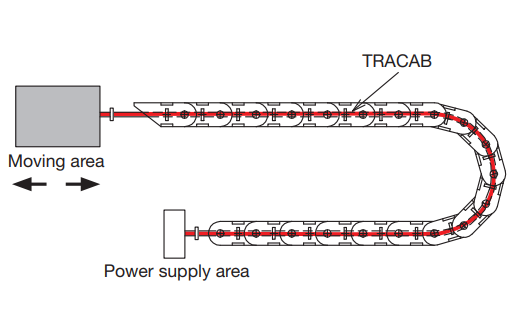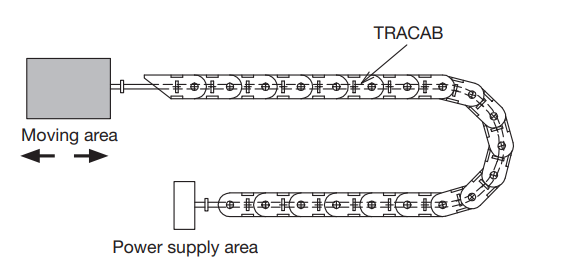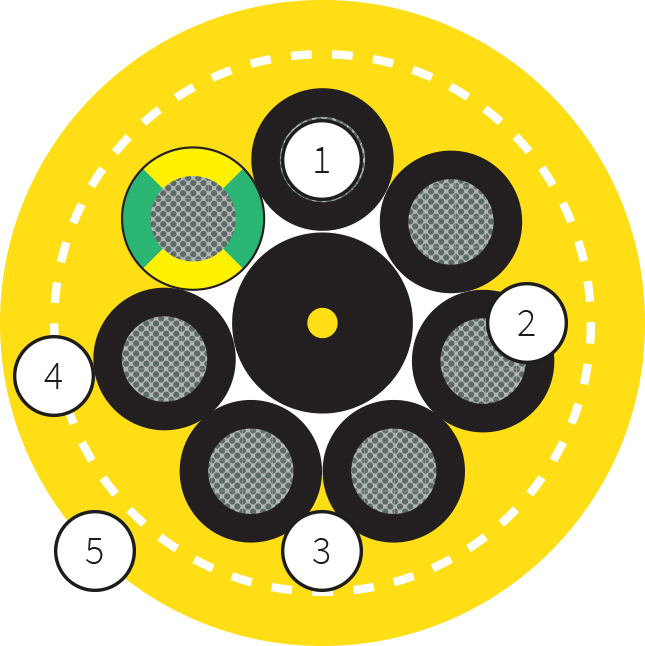


Product Details
Place of Origin: Hefei Anhui China
Brand Name: FeiChun™
Certification: VDE 0250 Part 814
Model Number: Crane Drag Cable
Payment & Shipping Terms
Minimum Order Quantity: 200 M
Price: 10-50 USD per meter, price varies according to specifications
Packaging Details: Cable Reels or Packaging Bags
Delivery Time: 15-30 Days
Payment Terms: T/T or Western Union
Supply Ability: 18,000 meters per week
UV Stability: |
UV Stable Structure |
Compact Installation: |
Compact Design |
Industrial-Grade Build: |
Industrial-Quality Construction |
Shock-Resistant Structure: |
Impact-Resistant Design |
Reliable Power Transmission: |
Stable Power Transfer |
Efficient Heat Dissipation: |
Excellent Heat Dissipation |
Safety Certifications: |
Certified For Safety |
Easy Installation Process: |
Easy To Install |
UV Stability: |
UV Stable Structure |
Compact Installation: |
Compact Design |
Industrial-Grade Build: |
Industrial-Quality Construction |
Shock-Resistant Structure: |
Impact-Resistant Design |
Reliable Power Transmission: |
Stable Power Transfer |
Efficient Heat Dissipation: |
Excellent Heat Dissipation |
Safety Certifications: |
Certified For Safety |
Easy Installation Process: |
Easy To Install |
Crane drag cables are vital components in industrial crane systems, playing a crucial role in powering overhead cranes as they traverse large facilities.
Laid along the length of the crane runway, these cables are designed to supply power and control signals to the crane bridge, ensuring continuous operation without disruption.

As industrial facilities grow larger and crane systems become more advanced, the demand for high-quality, durable, and efficient crane drag cables has never been more important.
In this article, we will delve into the history of crane drag cables, their key characteristics, how they function within modern crane electrification systems, and why they are an essential element for businesses that rely on crane operations.
By the end, you'll have a clear understanding of how crane drag cables can optimize your facility's crane management.
The concept of crane drag cables dates back to the early days of industrial overhead cranes, where early solutions for powering cranes often involved basic cables that were prone to tangling, fraying, and breaking.
Early crane systems were simple but inefficient, with limited capabilities for handling the large-scale operations seen today.
However, as industries grew, so did the need for better crane electrification systems. This led to innovations in crane power cables, particularly for overhead cranes, which required robust, flexible, and long-lasting cable solutions that could endure constant movement along a runway.
The cable festoon system, introduced in the mid-20th century, was one of the first solutions designed to improve crane cable management. It worked by suspending cables along a series of trolleys or carriers, which moved with the crane to prevent tangling and damage.
While this was a significant advancement, crane drag cables emerged as an even more streamlined solution. By laying these cables directly along the crane runway, they could be shielded from the wear and tear that moving parts often experience in festoon systems.
Modern crane drag cables are integrated into various systems, such as drag chains, cable tracks, and energy chains, ensuring that overhead cranes receive uninterrupted power as they move along the runway. The evolution of these cables has made industrial crane systems more efficient, reliable, and capable of handling heavy-duty operations.

Crane drag cables are specialized cables designed to carry power and control signals from a fixed power source to a mobile crane, ensuring smooth operation as the crane moves along its runway. These cables are laid along the length of the runway and connected to the crane bridge, which enables it to perform essential tasks, such as lifting, moving, and lowering heavy loads.
One of the primary benefits of crane drag cables is that they provide a continuous and flexible power supply without getting in the way of crane movement. Unlike traditional cable setups that can become entangled or damaged, drag cables are durable and are designed to withstand the constant motion and stress that crane operations demand.
Durability: Crane drag cables are built to withstand harsh industrial environments. They are designed with rugged materials to resist wear and tear from constant movement and the external conditions of the facility, such as heat, dust, and moisture.
Flexibility: These cables must remain flexible while being able to move with the crane bridge. They are typically manufactured using materials such as rubber or polyurethane, which provide both the flexibility and resilience needed for long-term use.
High Tensile Strength: To avoid damage from tension or pulling forces, drag chain cables for cranes have high tensile strength, which prevents them from stretching or breaking under the stress of crane operations.
Weather and Chemical Resistance: Crane drag cables are often exposed to varying environmental conditions. As a result, they are designed to resist weather elements like rain and UV exposure, as well as industrial chemicals that could degrade the cable over time.
Crane drag cables are essential in various industries, from manufacturing to shipping and construction. In these settings, overhead cranes are used to move heavy loads, and drag cables provide the power needed to make these operations possible. Below are some specific applications:
Overhead Crane Power Supply:
In industries where overhead cranes are used extensively, drag cables provide the necessary power for smooth crane operation along the runway. These cables ensure that cranes can travel the length of the facility, picking up and moving loads efficiently.
Crane Cable Management:
In large industrial setups, proper cable management is essential for ensuring the safety and efficiency of crane operations. Drag cables help streamline cable management, reducing the risk of cable damage and the need for constant maintenance.
Crane Festoon Systems:
While crane festoon systems are still used in many facilities, they are often paired with crane drag cables to ensure optimal power supply and control. Festoon systems rely on cable carriers that move with the crane, while drag cables provide additional flexibility and power support.
Crane Electrification System:
The electrification of cranes relies heavily on power cables to deliver the necessary electricity. Crane drag cables are an integral part of these systems, providing a continuous power flow to keep cranes operational.
There are several different types of crane drag cables, each designed for specific applications and environments. Some common types include:
Cable Track:
These drag cables are laid in a protective track along the crane runway. The track shields the cable from damage while allowing the crane to move freely.
Drag Chain:
Drag chains provide additional support for drag cables, ensuring that they remain aligned and secure as the crane moves. These systems are ideal for environments where heavy loads or frequent movement can put stress on the cables.
Energy Chain:
Similar to drag chains, energy chains are designed to guide and protect cables while they are in motion. They are commonly used in overhead crane systems to prevent cable tangling and ensure a reliable power supply.
Cable Carrier:
These carriers hold the drag cable in place and help guide it along the runway. By keeping the cable organized and free from obstruction, carriers ensure smooth crane operation and reduce the risk of cable damage.
Crane Cable Trolley:
In many overhead crane systems, trolleys are used to transport the drag cable along the length of the runway. These trolleys help manage the cable’s movement and prevent it from becoming tangled or caught.

For any business that relies on overhead cranes to manage heavy loads, crane drag cables are an indispensable component. Without these cables, cranes would be unable to receive the power they need to perform tasks, leading to downtime, inefficiencies, and potentially dangerous working conditions.
By investing in high-quality crane drag cables, businesses can ensure that their crane systems remain functional and reliable, even in demanding environments.
Whether used in manufacturing, shipping, or construction, these cables are key to maximizing productivity and maintaining smooth crane operations.
When selecting the right crane drag cable for your facility, it’s important to consider the specific needs of your crane system. Factors such as cable length, material, and the type of cable management system you use (e.g., cable festoon system, crane conductor bar system, or cable track) will all influence the type of drag cable you require.
Additionally, facilities that operate in harsh environments may need cables with enhanced weather resistance or chemical protection. By working with a trusted supplier, you can ensure that you choose the best drag cable for your specific application.
In conclusion, crane drag cables are a critical component for powering cranes in large industrial facilities. These cables ensure that cranes receive a continuous supply of power as they move along their runway, enabling them to lift and transport heavy loads efficiently.
With advancements in crane electrification systems, drag chains, and energy chains, modern crane drag cables offer unparalleled durability, flexibility, and reliability. Whether you're managing an overhead crane or planning a new installation, investing in the right drag cable can significantly improve your operations.
For those looking to enhance their crane cable management and power systems, it's essential to choose a high-quality, durable drag cable that meets the specific demands of your facility.



Note: This is just part of the standard parameters of our products. Please contact our Engineer if you need more. And the information contained within this webpage is for guidance only and is subject to change without notice or liability. All dimensions and specifications are nominal and are subject to normal manufacturing tolerances. All pictures shown are for illustration purposes only. The actual product may vary. All the information is provided in good faith and is believed to be correct at the time of publication.